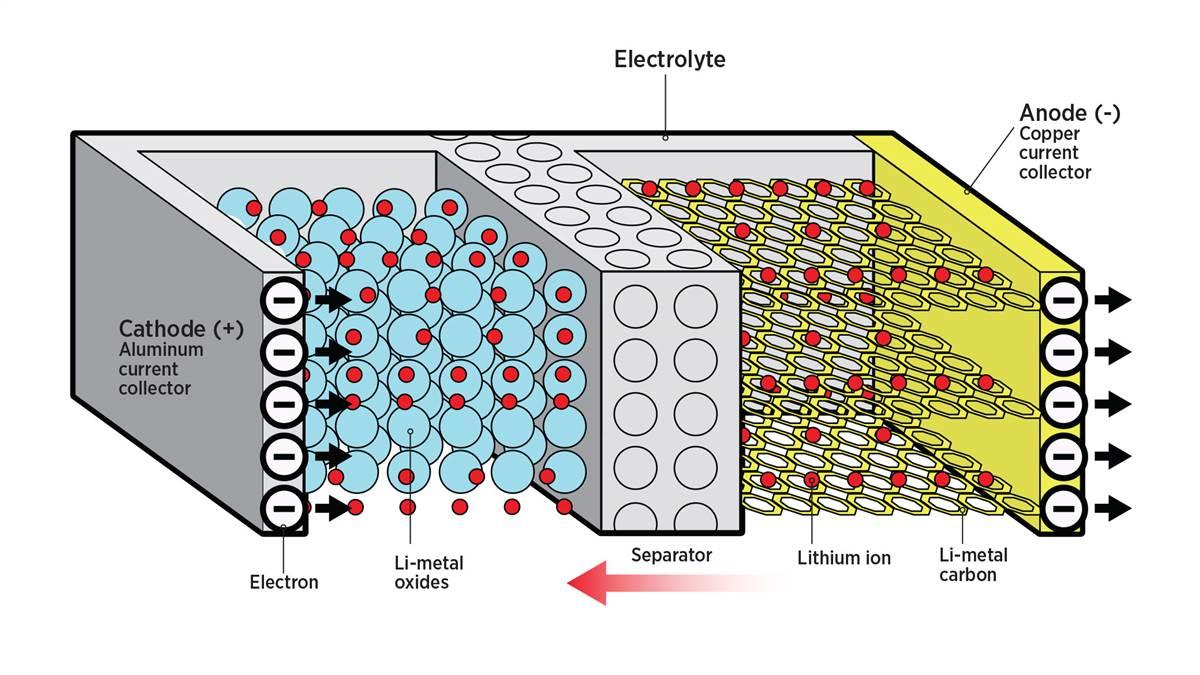Lithium-ion batteries
Incredibly light and long lasting

When a lithium ion battery is discharging, positive ions flow from the anode to the cathode, generating a flow of electrons in the opposite direction.
Illustration by Steve Karp
The worldwide fleet of widebody jets was parked for months as engineers and regulators tried to understand what caused some batteries to overheat and what to do about it. Eventually, they found the flaws, addressed them, and have resumed flying without the recurrence of any such problems.
In retrospect, the fact that the aviation world didn’t just rip out this problematic new technology and replace it with existing lead-acid batteries shows just how important the benefits of lithium-ion batteries really are. They’re so light, powerful, smart, and so long lasting that solving their shortcomings (and short-circuits) was worth the effort.
Lithium-ion batteries look much the same as their lead-acid counterparts, but pick one up and the weight difference is obvious. They’re about 80 percent lighter. And in aviation, where weight savings is at such a premium, an 80-percent improvement is astonishing.
Beyond weight savings, however, lithium-ion batteries have built-in microchips to prevent them from overcharging, or rapidly discharging.
If a pilot inadvertently leaves the aircraft electrical master switch on and walks away overnight, for example, the battery can protect itself by sensing the problem, turning itself off, and not fully discharging. Similarly, if an external voltage regulator fails, a lithium-ion battery is designed to protect itself from overcharging.
Lithium-ion batteries can hold a charge longer when they’re not being used. They recharge faster. And they deliver more cranking power at high-demand periods such as engine starts in cold weather.
A growing number of aircraft battery manufacturers are producing and certifying lithium-ion models, and the technology is poised to become dominant across the whole aircraft spectrum.
From jet transports to ultralights, we all gain from more power and less weight.



